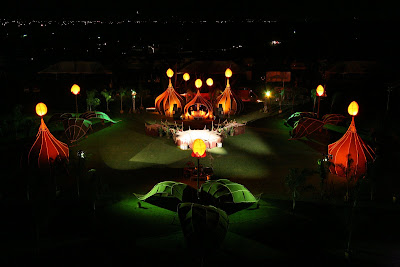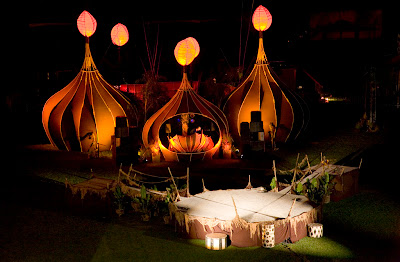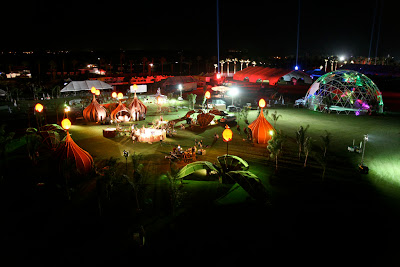 while being too sick to get out of bed for the majority of the past week, i read Generation Me by jean twenge. i found out about the book via danah boyd’s post several weeks ago, and beyond my long-standing general infatuation with teenagers, it was the aspect that dealt with the rise of narcissism in the current culture specifically that made me really curious to read it.
while being too sick to get out of bed for the majority of the past week, i read Generation Me by jean twenge. i found out about the book via danah boyd’s post several weeks ago, and beyond my long-standing general infatuation with teenagers, it was the aspect that dealt with the rise of narcissism in the current culture specifically that made me really curious to read it.
as someone whose professional and recreational interest is directly based in people fetishizing the self (a curious pratfall of identity expression) i find the implications of a culture’s self-obsessive compulsive tendencies to be beyond fascinating.
after danah’s enthusiastic review of the book, i was eager to spend my hours of sniffling and sneezing incapacitation at least getting to delve into an analysis of the social psychology of the latest generation of teenagers and 20-somethings.
but a 120-tissue box of kleenex later, and i was suddenly aware that the book was bothering me more than my severe sinus congestion.
it’s got a promising start. hey, i can dig the whole, the self-esteem education approach has developed a generation with a heightened predisposition for narcissism bit. as the daughter of a moscow conservatory-trained violist, i have been hearing my mother complaining for the past two decades about how american students (as opposed to european and asian ones) are totally incapable of dealing with criticism. with a music instrument there is no “A for Effort.” you either hit the right note, or you didn’t. so it would definitely seem like a valid observation that america’s particular ego-insulating take on child development could yield a lot of egotistic children.
there’s even a semi-astute extension of this theory into an explanation for the civic cynicism in the recent generation of once would be “rebels.” all this focus on the self, i.e, “you gotta believe in yourself, and then you can achieve anything,” or “you have to love yourself before you can love anyone else” could logically translate to a widespread political apathy. after all, if shit’s fucked up, you’re supposed to be able to take care of it simply by believing in yourself more… right? not by joining with the other people who are in the same boat as you and working towards affecting larger institutional change together, certainly. while prior generations of youth were protesting, and organizing towards making an impact in social justice and civil liberties, we can’t even be bothered to vote. the promotion of a rampant, definitively american style of radical individualism (hellooo, Ego, how YOU doin‘?) certainly could be a suspect to bring in for questioning on that charge.
however, beyond these two points the book is a mess of contradiction, anecdotal “proof,” and some mind-bogglingly trite answers to the narcissism epidemic (how did the editor okay “watch less MTV, and get your daily dose of essential fatty acids, kids” a valid “solution”…. seriously?)
the biggest disappointment of the book is that it actually fails to present any kind of sufficient analysis for the implications and applications of this elevated cultural narcissism. don’t get me wrong, i think the diagnosis is dead-on. i just don’t think the symptom chart is all that accurate.
perhaps the most glaring oversight in the book is the complete ignorance or denial of two very significant books on the future of life for the coming generation, resulting in statements that end up being glaring contradictions of prior trend-forecasts.
 1. published in 2003, urban tribes, by ethan watters, details how this generation is “redefining friendship, family, and commitment.” watters presents a cultural shift wherein this generation of transplanted young folks making their way out on their own–removed from the traditional support system of extended family/close-knit community–is creating its replacement through the formation of what he labels “urban tribes.” these friend groups function as surrogate family/support systems helping the individuals within them to handle the kind of trials that they wouldn’t be able to solely on their own. twenge fears we are becoming a nation of isolated workaholics, (and some of us are, certainly) but watters argues that just as significant a segment of us are instead finding new ways of extending the social “clique” dynamic we got used to in high school. we may be politically apathetic, but we’re pretty savvy when it comes to naturally gravitating towards a social arrangement of tight and loose friendships formed around some basic bonding activities or affinities. (watters mentions his friend group planning their burningman theme camp, for instance). a semi-conscious method of delaying adulthood (i.e. marriage, children, etc.) / prolonging adolescence isn’t a move that in any way negates the escalating narcissism prognosis, thus by completely not taking it into account twenge’s assertion on narcissism’s effects is glaringly incomplete.
1. published in 2003, urban tribes, by ethan watters, details how this generation is “redefining friendship, family, and commitment.” watters presents a cultural shift wherein this generation of transplanted young folks making their way out on their own–removed from the traditional support system of extended family/close-knit community–is creating its replacement through the formation of what he labels “urban tribes.” these friend groups function as surrogate family/support systems helping the individuals within them to handle the kind of trials that they wouldn’t be able to solely on their own. twenge fears we are becoming a nation of isolated workaholics, (and some of us are, certainly) but watters argues that just as significant a segment of us are instead finding new ways of extending the social “clique” dynamic we got used to in high school. we may be politically apathetic, but we’re pretty savvy when it comes to naturally gravitating towards a social arrangement of tight and loose friendships formed around some basic bonding activities or affinities. (watters mentions his friend group planning their burningman theme camp, for instance). a semi-conscious method of delaying adulthood (i.e. marriage, children, etc.) / prolonging adolescence isn’t a move that in any way negates the escalating narcissism prognosis, thus by completely not taking it into account twenge’s assertion on narcissism’s effects is glaringly incomplete.
 2. published in 2002, the rise of the creative class, by richard florida, investigates the development of a demographic shift that is “transforming the nature of work, leisure, community and everyday life.” florida, a renowned urban planner now turned cultural trend guru asserts that much like the previous eras whose industry was defined by “organization” (50’s) or “information” (80’s/90’s), today’s defining occupational movement is “creativity.” the result is a whole “class” of individuals who work in new fields such as graphic design, audio engineering, web development, etc. in Generation Me, twenge asserts that much of what makes today’s “confident, assertive, and entitled” young americans so miserable is the crushing disappointment that results from their impossible mantras of “believe in yourself, and never give up on your dreams.” what pop culture is leading this generation to expect (i.e. the lifestyle on MTV’s Cribs that they’ll access as soon as they win American Idol) is just setting young people up for anxiety and depression once they are forced to face the harsh reality that they’ll barely be able to afford buying a house or raising a family. not everyone is going to be able to reach their delusional dreams of fame and wealth, says twenge, so we need to make sure today’s youth are adequately prepared for that truth. twenge’s position is that one of the best ways to help youth today deal with reality is by making sure they understand that they cannot expect that work is going to be satisfying, and should find ways to cope with that asap. “no one at my company is following their dreams,” says a friend of twenge’s quoted in the book, who works in marketing.
2. published in 2002, the rise of the creative class, by richard florida, investigates the development of a demographic shift that is “transforming the nature of work, leisure, community and everyday life.” florida, a renowned urban planner now turned cultural trend guru asserts that much like the previous eras whose industry was defined by “organization” (50’s) or “information” (80’s/90’s), today’s defining occupational movement is “creativity.” the result is a whole “class” of individuals who work in new fields such as graphic design, audio engineering, web development, etc. in Generation Me, twenge asserts that much of what makes today’s “confident, assertive, and entitled” young americans so miserable is the crushing disappointment that results from their impossible mantras of “believe in yourself, and never give up on your dreams.” what pop culture is leading this generation to expect (i.e. the lifestyle on MTV’s Cribs that they’ll access as soon as they win American Idol) is just setting young people up for anxiety and depression once they are forced to face the harsh reality that they’ll barely be able to afford buying a house or raising a family. not everyone is going to be able to reach their delusional dreams of fame and wealth, says twenge, so we need to make sure today’s youth are adequately prepared for that truth. twenge’s position is that one of the best ways to help youth today deal with reality is by making sure they understand that they cannot expect that work is going to be satisfying, and should find ways to cope with that asap. “no one at my company is following their dreams,” says a friend of twenge’s quoted in the book, who works in marketing.
this struck me personally as particularly tragic as i’d actually be someone whose dream, in fact, DOES involve working in marketing. according to florida, there are not only quite a few people out there whose dreams involve some kind of creative pursuit, but, in fact, enough occupational need for such individuals to warrant calling it a whole “class” of work. after all, one thing that you gotta hand to self-esteem education is that in making all the hard and fast “rules” a lot more flexible, it’s provided a whole generation with the kind of space for “creativity” (for better or worse) that hasn’t been accommodated in education ever before.
creativity has always been a competitive advantage in business, and florida asserts that there is now a widespread transformation happening in the nature of work in order to facilitate and foster this competitive advantage. this shift involves the kinds of considerations business has never needed to face before, and, a good deal of them involve allowing people the ability to gain a sense of fulfillment from their work. (they may still end up being workaholics anyway, but when work’s fulfilling, you may as well, right?)
dreams of fame may be ridiculous and end only in frustration and disappointment, but then again, so will the idea that fame is going to bring you fulfillment anyway. demand for fulfilling work by a whole generation of “creatives,” is what has fueled the very shift happening in the nature of work in the first place. (now, if they could all just get organized and demand better pay!)
finally, even laying the full blame on self-esteem based education doesn’t quite add up. twenge’s main recommendation for addressing the escalation of narcissism, which for the record is, indeed, unhealthy in a number of social and psychological ways, is putting an end to the self-esteem education movement. but if giving kids trophies just for participating was really considered sufficient education then why are kids’ schedules overbooked with a ton of extra curricular and AP add-ons? the robustness of the SAT prep industry alone is testament to the fact that just because certain schools may attempt to obfuscate the competition inherent in education, it doesn’t mean anyone’s really falling for it.
this of course leaves me now, further on my way to regaining my health, going through fewer and fewer tissues with each day, and still my curiosity about all those narcissism questions left unanswered. for instance:
… a generation constantly faced with the requirement of thinking about and defining themselves and their identities with each bio they fill out, and each photo they upload, on every social networking app emerging from the primordial web 2.0 ooze… how’s THAT affect narcissism?
… a generation with more occasion to pose for cameras than probably even most movie stars ever needed to endure in the pre-digital age… how’s THAT gonna affect narcissism?
… a generation where anyone can create a show out of their daily lives on youtube or blip.tv, and turn their very existence into a “performance” on a level once only really experienced by sideshow freaks…well, how’s THAT gonna affect narcissism?
and what does all of this mean for the state of the next generation’s mental health?
i’m feeling incredibly entitled to a book about THAT.







